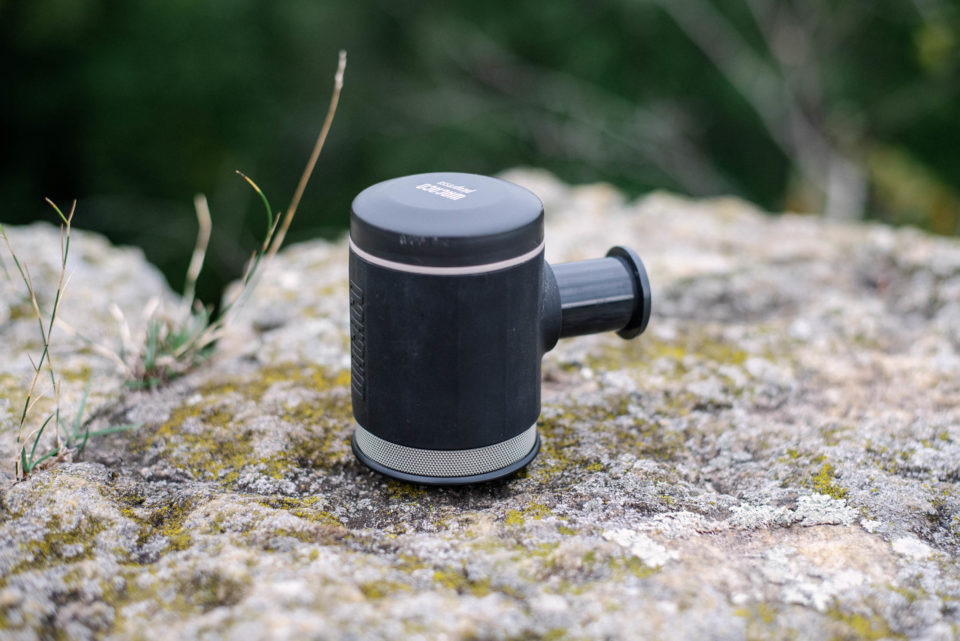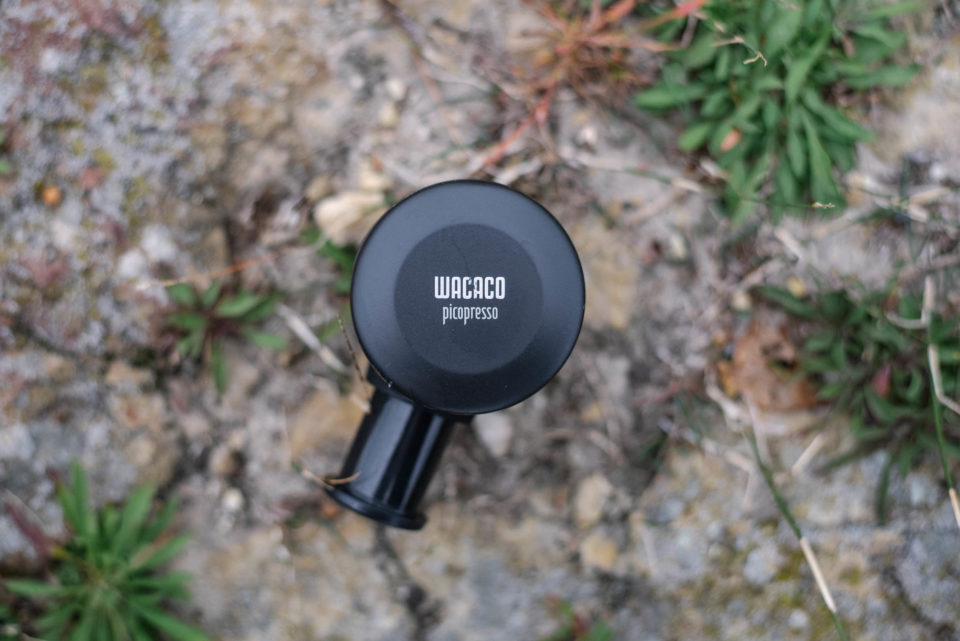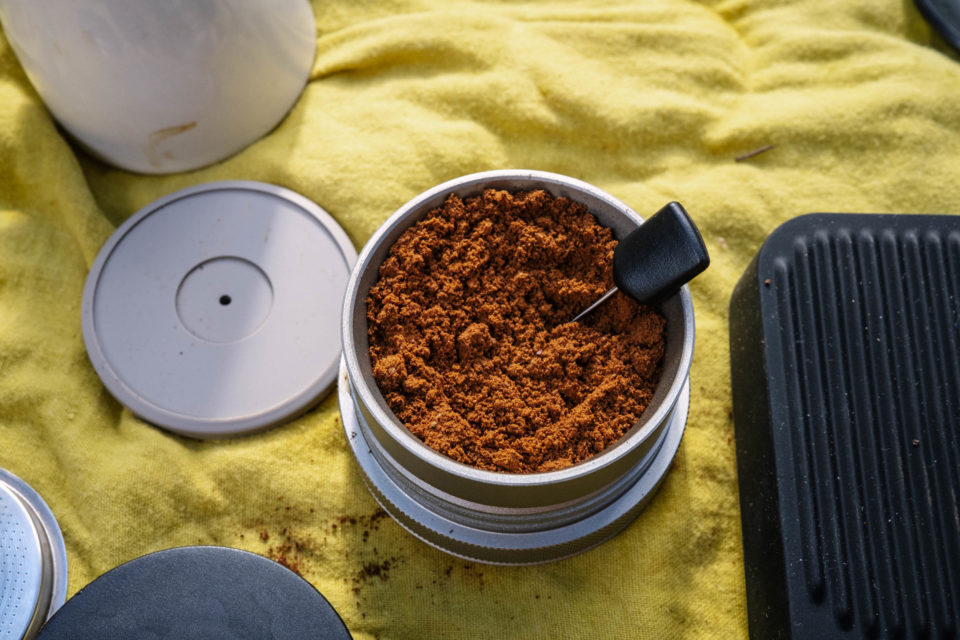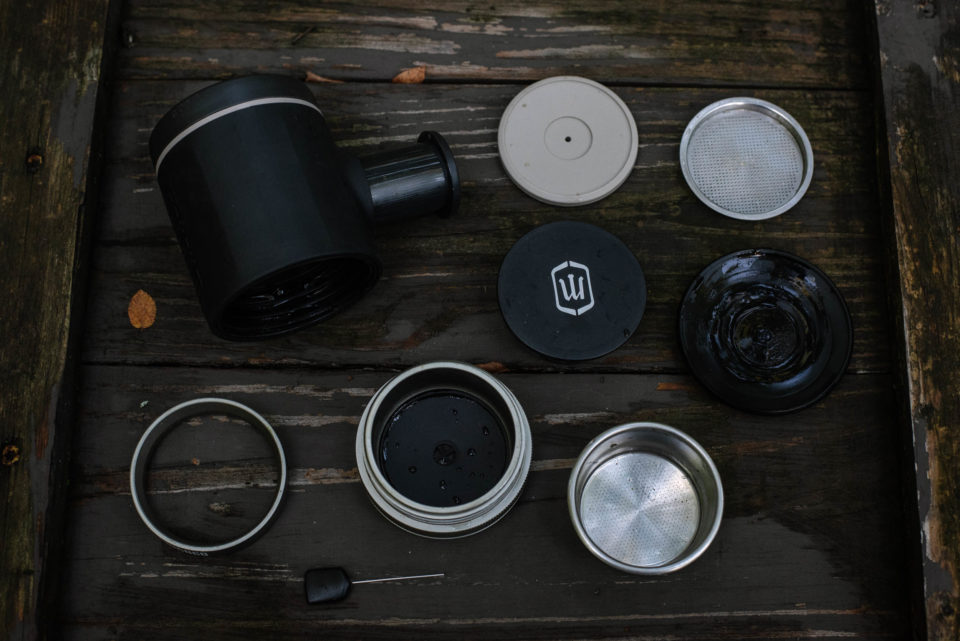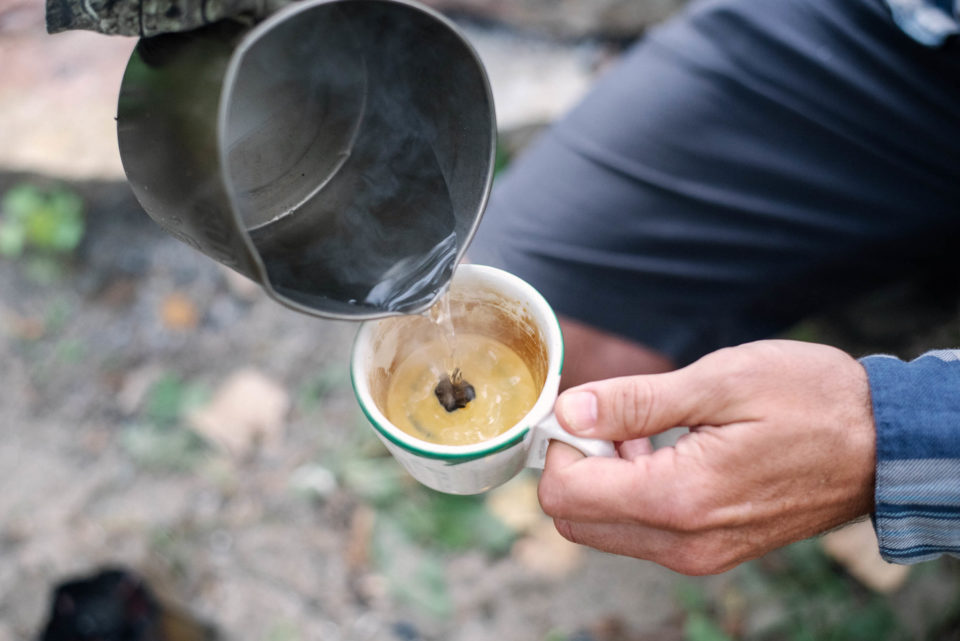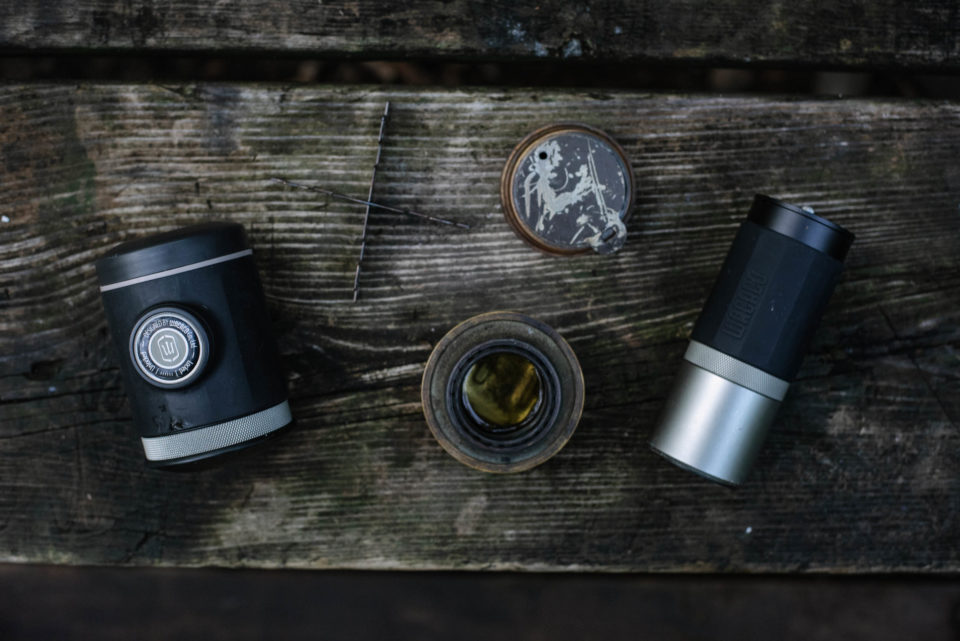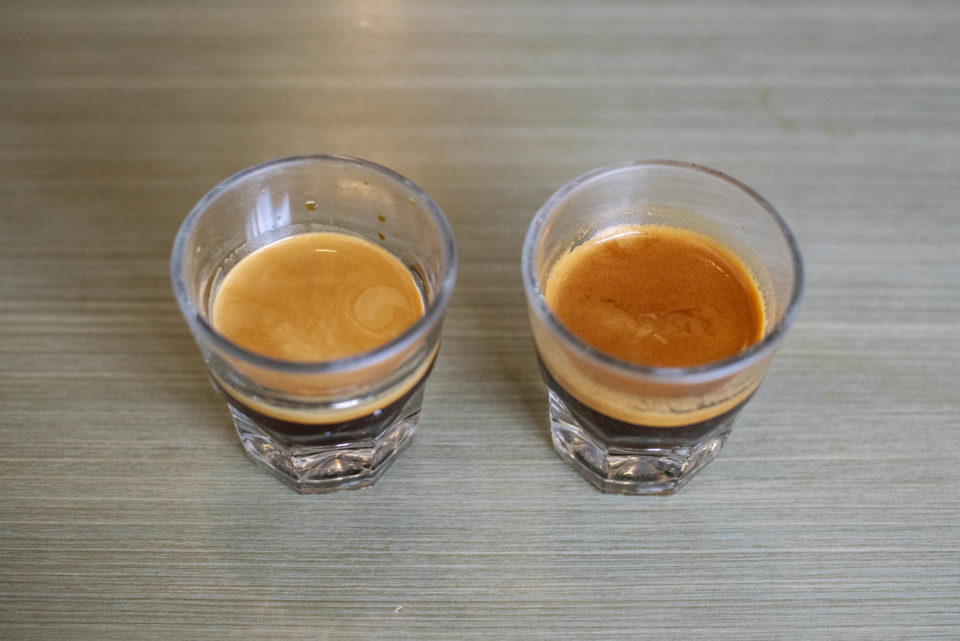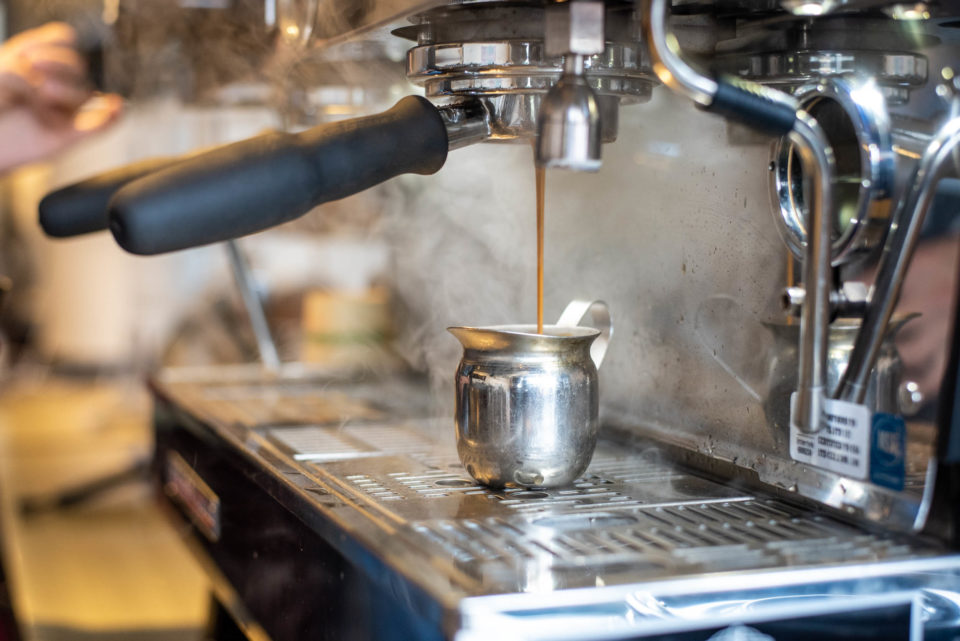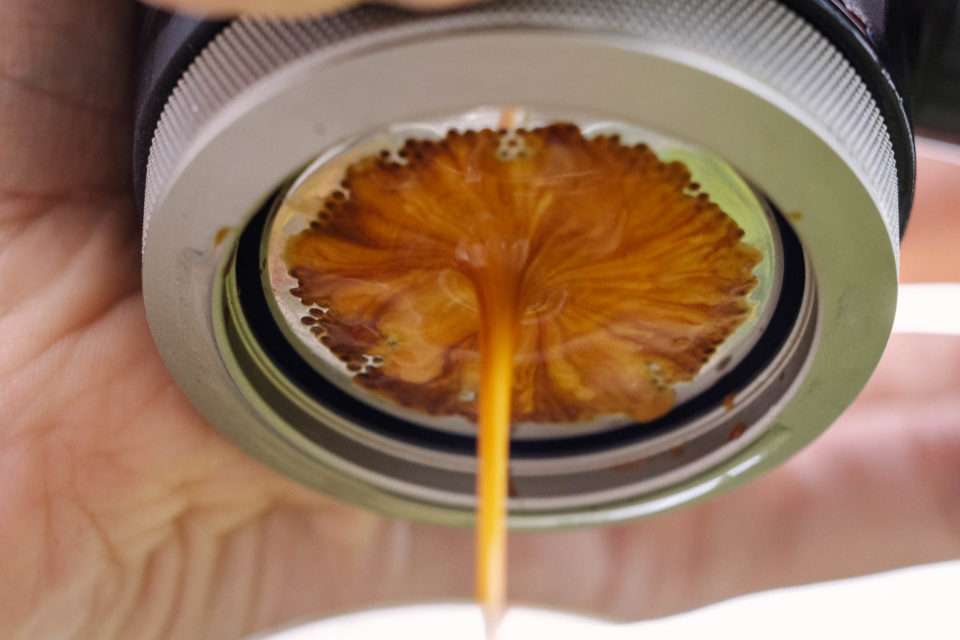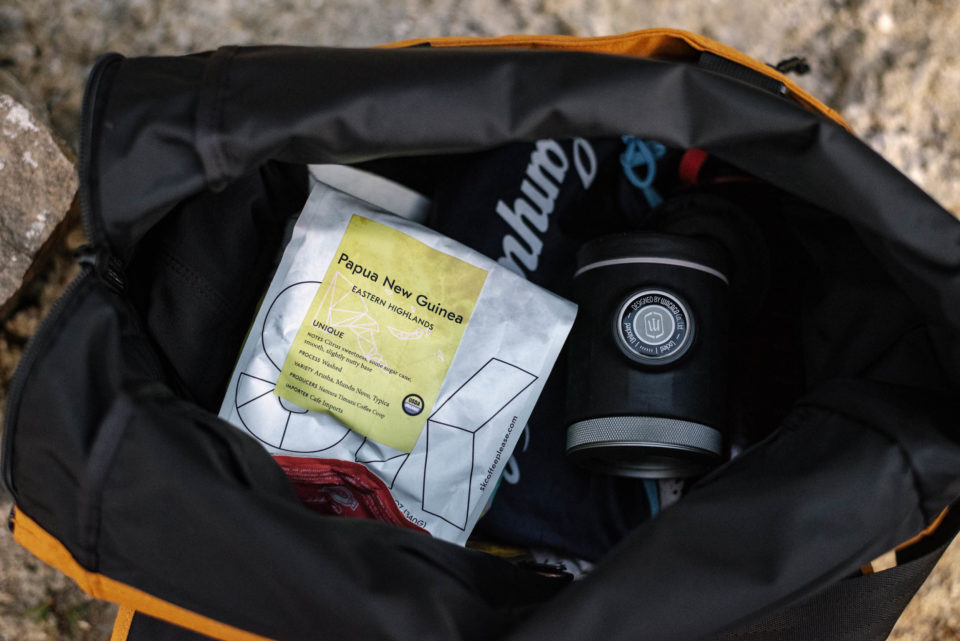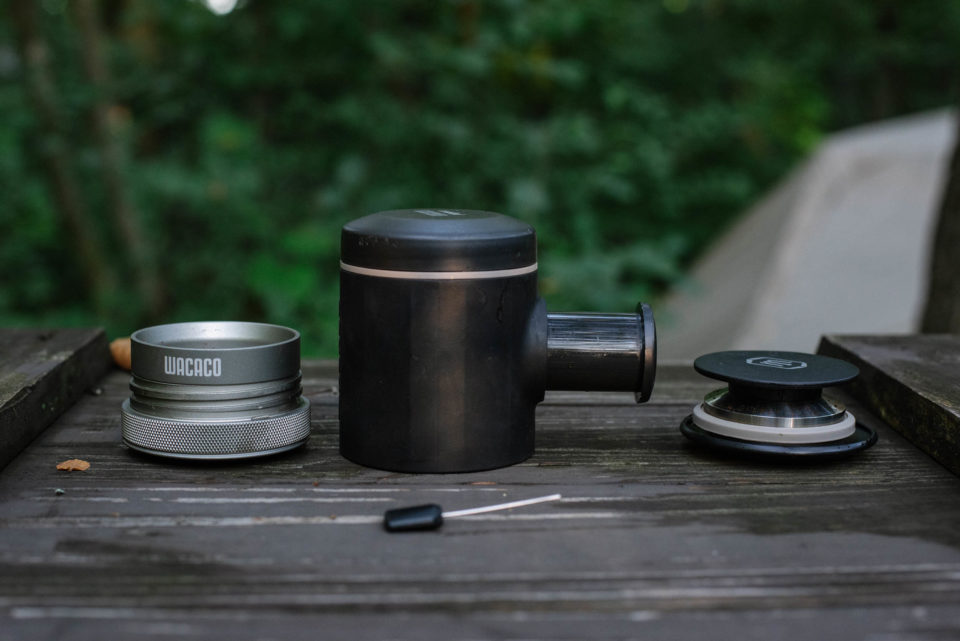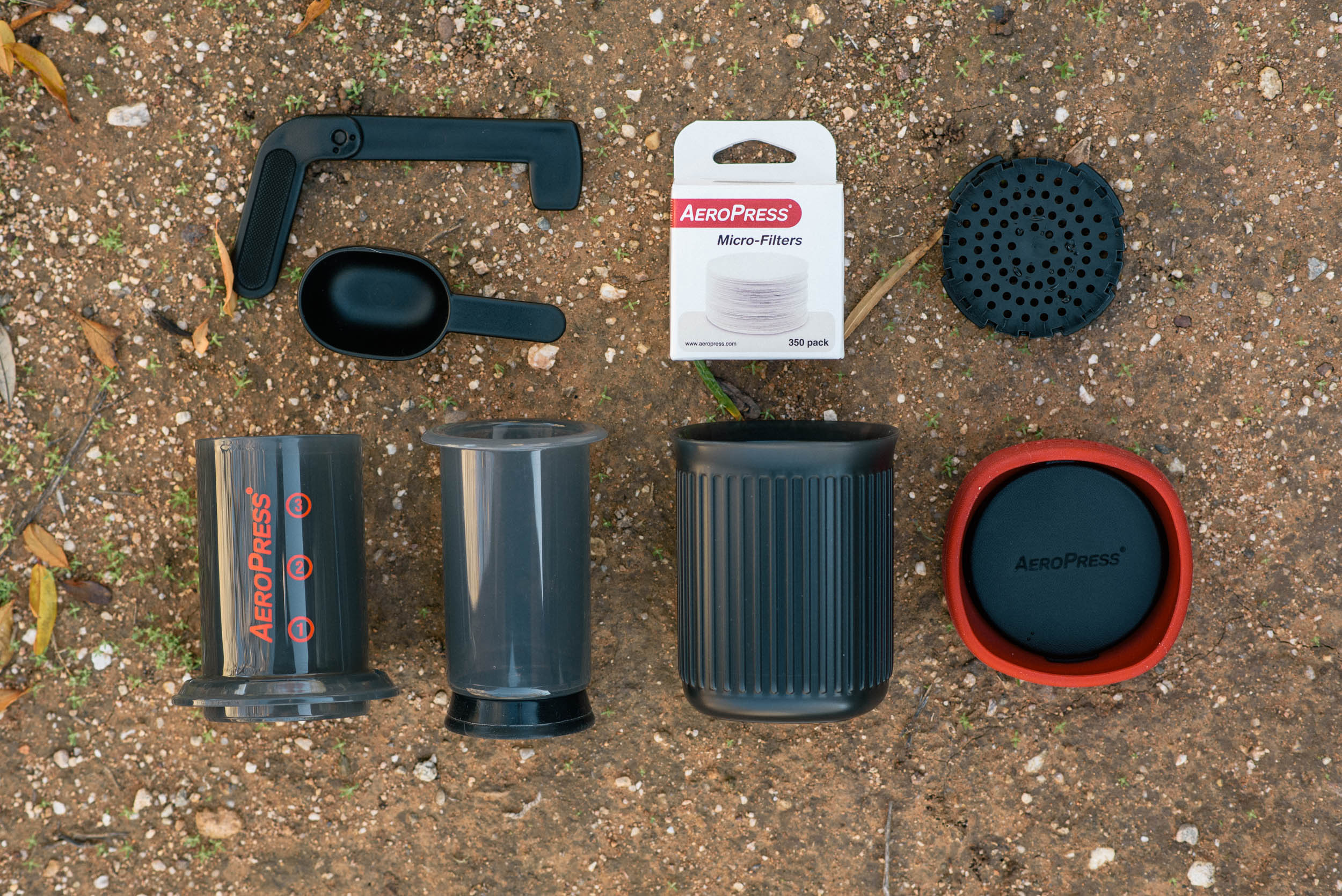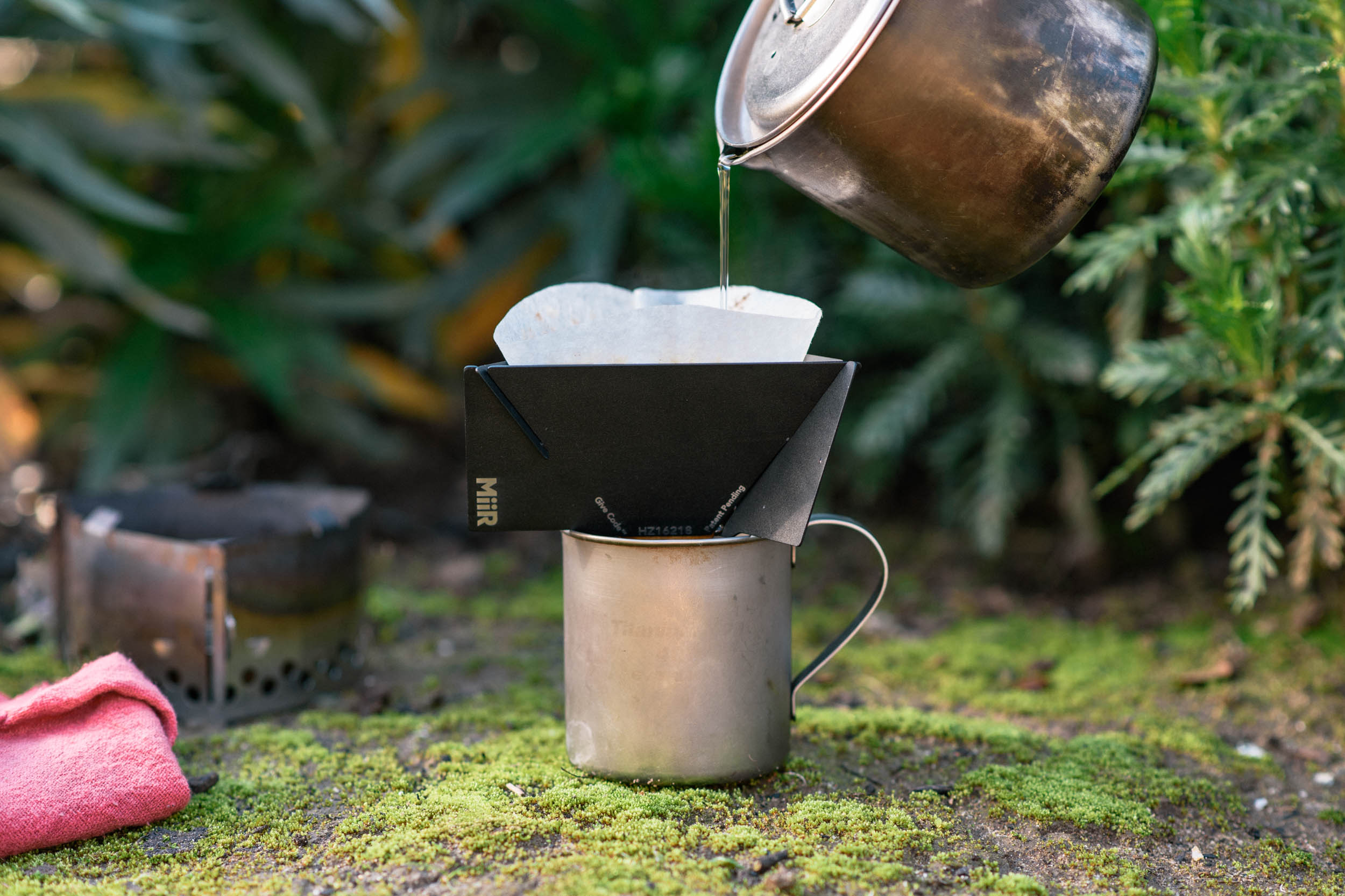Wacaco Picopresso Review: Espresso Outside
Lucas recently got his hands on a Wacaco Picopresso, one of the most compact espresso makers on the market, and he reports back after a couple of months of pulling shots around camp and at home. Find his in-depth review of this tiny device that punches well above its minimal weight here…
PUBLISHED Oct 3, 2022
More than a few of my overnight bikepacking trips have been motivated by the simple promise of waking up and sipping coffee from the cozy confines of my sleeping bag with a view. As such, I’m always looking out for new and more portable ways to make great coffee outside.
I’d seen Wacaco’s Minipresso (2014) and Nanopresso (2017) compact espresso makers around during the past few years but never found them quite captivating enough to merit a closer look. Instead, I suppose I wrote them off as just two more contraptions amid the sea of coffee-making gadgets out there. But, for whatever reason, with its more robust build quality and seemingly more serious demeanor, the Picopresso (2021) piqued my interest earlier this year. I’m glad it did, as using it has reignited my passion for coffee and shaken up my coffee-making routine at home and around camp. After a long period of feeling like brewing and drinking coffee has been more habitual than anything, the Picropresso has me feeling excited again. Following a couple of months of experimenting with one on a daily basis, I’m happy to report that it has more than surpassed all of my expectations.
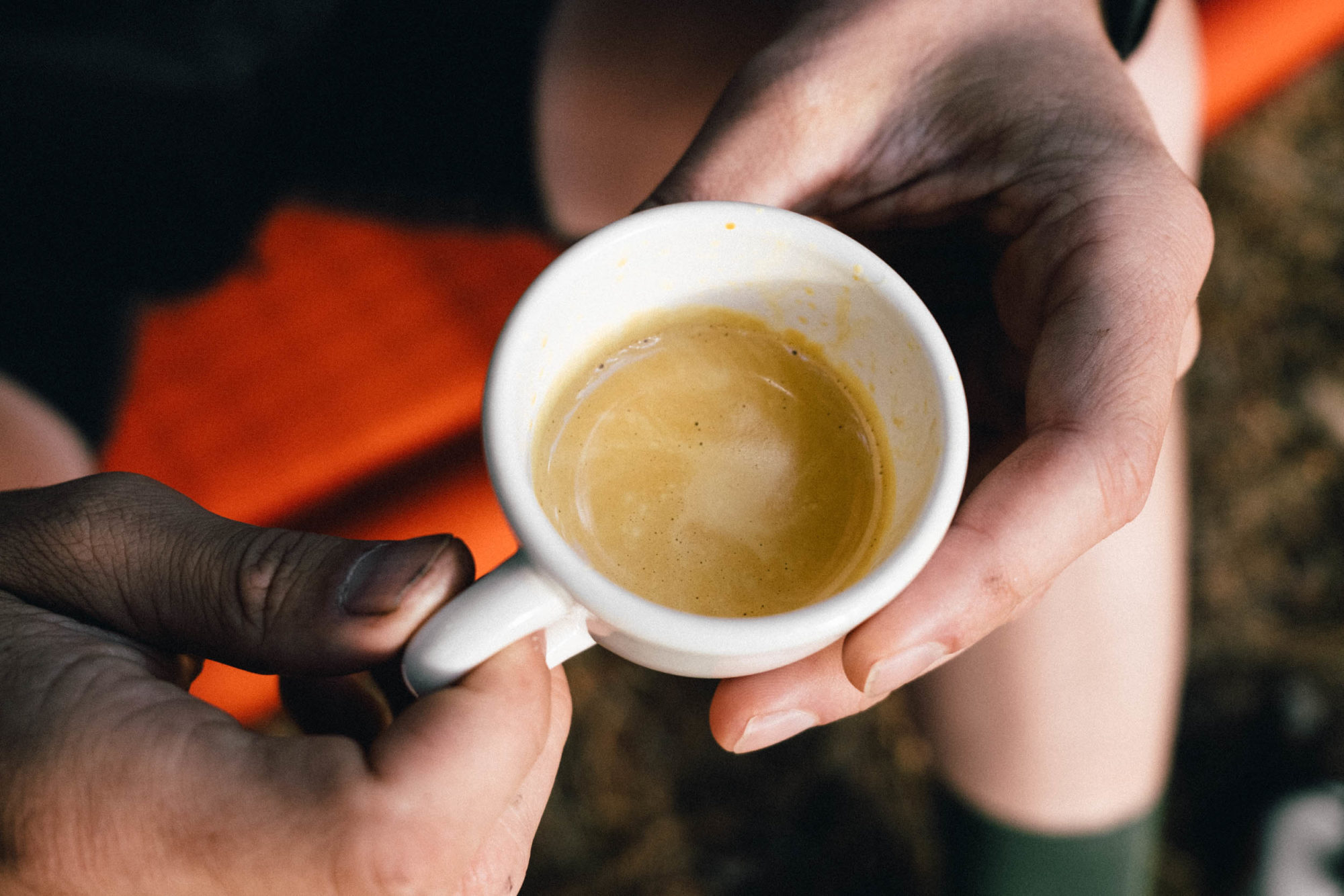
Introduction to the Picopresso
Measuring around 4 x 3 x 3″ (106 x 78 x 71 mm) and weighing in at 0.77 pounds (350 grams), the Wacaco Picopresso is an impressively compact and portable espresso maker that features the same naked portafilter and 18-gram, 52mm stainless steel basket found on most commercial machines. With its largely metal construction, it feels stout in hand, and even its plastic parts feel substantial. It has a 2.70-ounce (80-milliliter) capacity and brews a double shot of espresso in under a minute.
There’s no battery and nothing to plug in; it relies solely on a built-in hand pump to create up to a claimed 18 bars of pressure. Unlike alternatives that produce an espresso-like drink, the Picopresso makes real espresso with thick crema and rich flavors that rival anything you’ll find in most third-wave coffee shops. And it does so while fitting in the palm of your hand.
Trial and Error
To set the stage, the first shot I ever pulled through the Picopresso was an underwhelming mess that roughly matched my initial expectations for the device. The water ran right through and resulted in a lackluster brew that was akin to bitter black coffee or something out of a stovetop espresso maker. Having seen beautiful shots being pulled through the Picopresso in videos online, I decided to give it a few more goes. Some shots ran straight out, and others were impossible to push through. But, after fine-tuning the grind and dosage, I was soon making some entirely decent shots.
This brings me to the most important factor to consider with the Picopresso: precision is the key to getting a good and consistent output. Even a one-gram variation can make a difference when loading it with beans, so using a scale or pre-measuring your dose is essential. Unlike a more forgiving coffee maker, such as an AeroPress (which I’ve also reviewed here on the site), you can’t simply borrow a friend’s grinder when you roll up to a coffee outside meetup and realize you forgot yours—not without throwing their grind setting totally out of whack, at least. You’re also unlikely to be able to eyeball the amount of grounds going in and still end up with a decent shot. It takes some work to dial everything in; variations in beans or even freshness will necessitate a little tweaking. All that said, the results of sticking with it are well worth it.
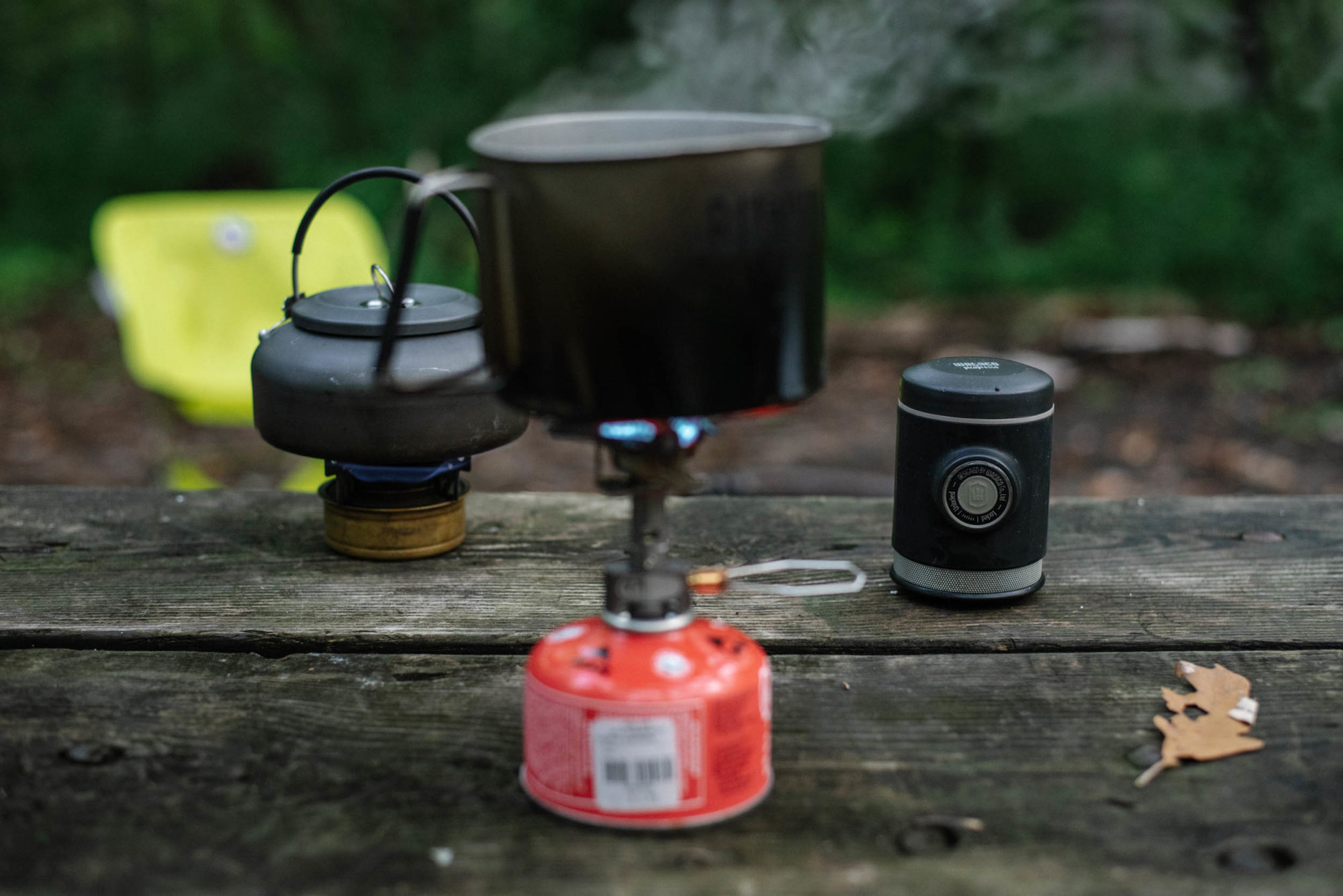
Espresso Outside
Once I had the Picopresso pretty well figured out at home, I was eager to take it out camping to find out how it would perform in the field. From the onset, a couple of issues presented themselves. First, keeping your water hot enough throughout the brewing process is far more challenging on a crisp morning than in your temperature-controlled kitchen. Without paying careful attention to this, it’s easy to end up with a lukewarm shot. Preheating the reservoir and letting it heat up for a while helps, as does being intentional about pulling the shot as quickly as possible.
The second issue with using the Picopresso out in the wild is that there are many small parts to keep track of, and they require some real estate. I’ve found that using a bandana works well for spreading everything out as you grind your beans and prepare your brew. It’s only a minor annoyance as long as you have a flat surface to work with, but I’ve dropped the distribution tool and other accessories into the dirt on a few occasions, and accounting for all the small bits can be a little frustrating.
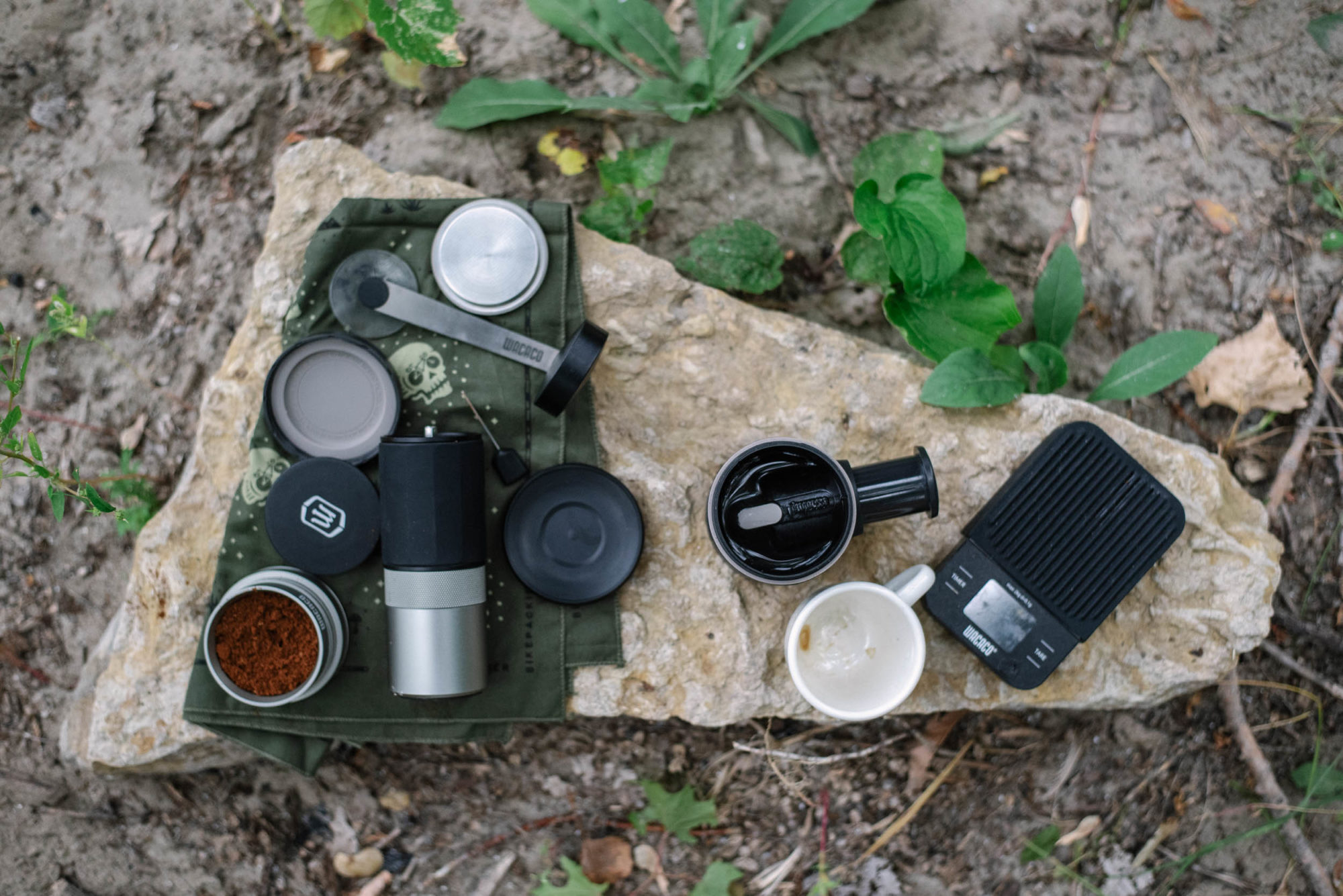
A couple of other nitpicks after pulling around 50 shots through the Picopresso: it can be a tad on the messy side in both loading and cleaning. Expect to wipe some grounds and drips off of whatever surface you’re using. The lid can also be a little finicky to screw on, and I wish the threads engaged a bit more easily, especially when I’m rushing to get it sealed to keep the heat in. Using water just off the boil, which I’d always recommend, can also make the Picopresso a little hot to hold, depending on how sensitive your hands are.
With the Picopresso’s quirks and drawbacks out of the way, let’s get to the good stuff. I’ve frankly been blown away by the quality of espresso that this little thing can produce. I also appreciate the Picopresso’s ultra-compact design and how all of the pieces cleverly nest inside. It feels exceptionally well built, too, making it great for tossing into a basket bag without having to worry about it bouncing all over the place. Although it took some initial work to get it dialed in, the process was part of the fun for me, and it’s consistently pulling fantastic shots now.
Head-to-Head with a La Marzocco

In part just for the hell of it and also because I was curious to get some feedback from a group of far more knowledgeable folks, I convinced my friends at Northern Coffeeworks (@northerncoffeeworks) in Minneapolis, Minnesota, to entertain my idea of a side-by-side taste test. While I was in the shop one day, we set up a (non-blind) taste test, with the humble Picopresso going head-to-head with their top-of-the-line La Marzocco espresso machine using the same dose of Northern Evergreen beans in both.
The resulting shots were surprisingly close in taste and appearance, and all of us agreed that the Picopresso more than held its own against the beautiful La Marzocco with its $10,000+ price tag. If you need proof that the Picopresso is the real deal when it comes to making authentic espresso, look no further. For reference, that’s the Picopresso shot on the left and the La Marzocco on the right. Because of its higher pressure, the shot from the La Marzocco has a tad more crema, and the color is a little different, too. Of course, the Picopresso isn’t going to replace the commercial machine in a bustling cafe setting—just imagine making hundreds of them a day. Despite making my head spin, it was a fun experiment, and it made clear that I hadn’t been overhyping the Picopresso in my head. Turns out it’s really that good.
My Picopresso Recipe
With so much variation among beans and other factors contributing to the uniqueness of each shot, it’s impossible to provide a one-size-fits-all recipe. That said, I think the following is a good starting place. I’ve been using it to run some classic Intelligentsia Black Cat through the Picopresso with great results these past few weeks.
1. Grind 17 grams of beans to a super-fine, almost powdery consistency. Set your grinder to as fine of a setting as you think you need for espresso, then go quite a bit finer beyond that.
2. Load your grounds into the basket, mix them thoroughly with the little distribution tool, and use the included tamper to tamp them down. The funnel serves as a built-in guide, so it’s not possible to apply too much force.
3. Preheat the reservoir with boiling water, pump the plunger a few times to run water through it, then dump all the water out.
4. With the water in your pot still on the boil, screw the Picopresso together, refill the reservoir to the top, and twist the cap on.
5. Pump the plunger 10 times and let the water and grounds pre-infuse for 20-30 seconds.
6. Slowly begin pumping the plunger at a steady pace, around once a second. You should feel a good amount of resistance, but it shouldn’t require more than one hand to pump. Stop when you have 40 grams of espresso in your cup. It should take about 30 seconds to pull your double shot.
7. Enjoy!

Who should buy a Picopresso?
Wacaco’s Picopresso won’t be for everyone. Beyond the obvious pre-requisite of needing to like the distinct taste of espresso, there are a few things to think about in determining if it’s right for you. First, it’s probably not going to make the cut for your next ultra-distance race. If fast and light is your top priority, instant coffee is likely a better option, and there are a number of surprisingly good options these days.
From a bikepacking perspective, I think the Picopresso is best suited to the type of rider who wouldn’t hesitate to pack a camp chair or slingshot on a trip just because. I’m also quite sure that coffee geeks will find the Picopresso immensely more enjoyable to use than more casual coffee drinkers who just want something to get the wheels spinning in the morning. If you already have a good grinder, don’t mind investing some time in figuring it out, and generally enjoy the slow process of brewing coffee by hand, the Picopresso could be a good match. And then there’s the price: at around $130, it’s either a remarkably affordable pocket espresso machine or an absurdly overpriced gizmo, depending on how deep you’ve gone down the coffee rabbit hole.
Lastly, before you rush out and buy a Picopresso for use at camp, keep in mind that the experience of drinking a shot of espresso is over very quickly relative to the time it takes to brew. So, consider whether having a quick shot is the outdoor coffee experience you’re after or if you’d rather take your time sipping a warm drink. One solution here is to add some water to your shot to make it into an Americano, giving you a few more moments to savor it. And, of course, if you really want to get fancy and you’re already lugging that camp chair and other luxury items anyway, there’s always the option of heating up and frothing some milk to add to your shot. I’ve yet to take my experiments quite that far, but there’s nothing to stop you from going all out and making a latte or cappuccino at camp (please be sure to share a photo in the comments below if you do).

Pros
- Makes genuine, cafe-quality espresso
- Super compact, clever nesting design
- Robust build quality with a solid feel
- Affordable way to make great espresso
Cons
- Temperature management can be tricky
- A lot of pieces to keep track of
- Requires precision to get a good output
- Expensive option if any coffee will do
- Size: 4.17 x 3.07 x 2.8” (106 x 78 x 71mm)
- Weight: 0.77 pounds (350 grams)
- Place of Manufacture: China
- Price: $129.90 USD
- Manufacturer’s Details: Wacaco.com
Wrap-up
In the 15 or so years that I’ve been seriously into coffee, I can’t imagine how many hundreds of cups of coffee I’ve brewed outside. Still, from my first sip of espresso out of the Picopresso at a little camp spot in the Rocky Mountains, I knew it was special. There’s something novel and uniquely satisfying about drinking a proper, complex, creamy shot of espresso well beyond the typical cafe or home setting, which I’d never done until that first morning in the mountains.
That said, I think I generally prefer the experience of slowly sipping a nice cup of coffee or two while lazing around camp in the morning. However, the Picopresso does what it does exceptionally well, and I fully intend to keep bringing it along on bikepacking trips as an alternative to my usual AeroPress—at least occasionally.
Even if you never take it out of your kitchen, you can easily spend 10 times as much on a machine for home use that occasionally requires costly repair and takes up significantly more counter space than the tiny Picopresso. As a pint-sized espresso maker, it’s unrivaled in its weight-to-quality ratio. In fact, I’d say it’s in a class of its own. If espresso is your caffeinated drink of choice and making coffee outside is your speed, I can wholeheartedly recommend giving the Picopresso a try.
Related Content
Make sure to dig into these related articles for more info...
Please keep the conversation civil, constructive, and inclusive, or your comment will be removed.














